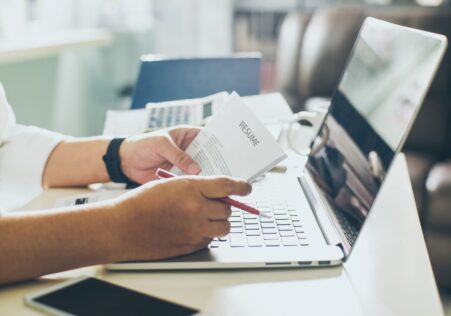How to write a resume Summary, Headline and the Objective

A resume summary, headline and goal are all important components of a professionally formatted resume. These are the first elements an employer will see and should be tailored to match the job that you’re applying for. We at Goulburn Resume, we specialize in providing professional resume writing services to help you stand out from the competition. In this article, we will discuss tips on how to write your resume summary or headline and an objective.
Section 1 How to Write the Resume Summary
A resume summary should be a brief introduction at the top your resume which summarises your skills and qualifications. It should be a few sentences or bullet points . It will highlight your most relevant qualifications and accomplishments.
- Keep it brief Resume summary is a brief overview of your education and work experience. Keep it to a few paragraphs and bullets.
- Use keywords: Include keywords related to the job you’re applying for. This will help your resume be noticed by hiring managers and the applicant tracking system (ATS).
- You can tailor it to the position The resume summary should be tailored for the specific position it is you’re applying. Highlight the abilities and experience relevant to the position.
- Include the most recent and relevant experience: Include your most current and relevant experience. This will convince the hiring manager that you’ve got the qualifications and experience they’re looking for.
- Find help from a professional if you’re having difficulty writing your resume’s resume summary, or you need help tailoring it to the job, consider seeking expert assistance from Goulburn Resume.
Section 2 What to Write in the Headline of a Resume
A headline for your resume is a concise paragraph at the top of your resume, which sums up your experience and qualifications with a catchy and captivating manner.
- Keep it short Your resume’s headline should be a brief description. Limit it to a few words or a few sentences.
- Use keywords: Use keywords appropriate to the job that you are applying for. This will allow your resume to be discovered by employers as well as applicants tracking systems (ATS).
- You can tailor it to the position Your resume’s headline should be tailored to the specific job which you’re applying. Highlight the skills and experience which are most relevant to the position.
- Be creative: Be creative with your headline . Make the headline pop.
- Find help from a professional if you’re struggling to create your resume headline or need assistance in tailoring it for the jobyou want, think about seeking professional help from Goulburn Resume.
Section 3 How to Write a Resume Objective
A objective for your resume is a line that you include at the beginning of your resume that explains your career goals and the specific job that you’re applying for.
- Keep it simple Resume objectives should be a short statement. Limit it to just a few paragraphs or bullet points.
- Tailor it to the job You can tailor your resume’s objectives to the job that you’ve applied for. Be specific about how you can contribute to the business’s goals.
- Be specific: Be specific about your professional goals and how they are aligned with the position you’re applying to.
- Get help from a professional: If you’re struggling to write your resume’s goal or assistance in tailoring it for the jobrequirements, you should seek out professional help from Goulburn Resume.
If you follow these guidelines, you can create a resume summary, headline and objective that draws attention to your accomplishments and abilities. Create them according to the position you’re applying to, and take professional advice if required. Goulburn Resume can also assist with the writing and make sure the resume is distinct the rest of your resume.
Alongside a compelling summary as well as a strong headline and objective, make sure to also include relevant experience, education and other relevant skills when you write your resume. Utilize strong action words to describe your past responsibilities and accomplishments. Also, make sure to quantify your accomplishments as often as you can. For example, instead of simply saying "Helped customers with their questions," say "Assisted over 100 customers per week with product and service related questions, which resulted in 20 percent increase in satisfaction ratings for customers.




